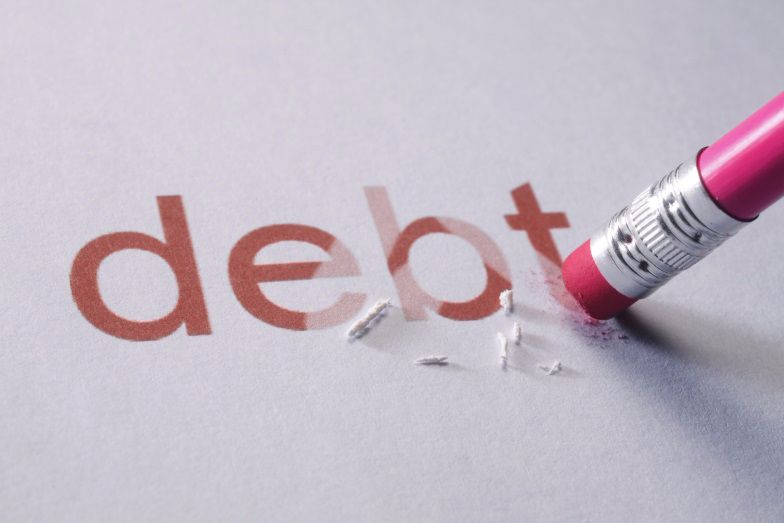Bankruptcy
Home > Bankruptcy
How do you know which bankruptcy type is available to you?
Chapter 7 Bankruptcy
Chapter 13 Bankruptcy
Bankruptcy Alternatives
Bankruptcy Considerations
Dischargeable vs. nondischargeable debts:
Prior to filing your bankruptcy case, you definitely want to know whether you will be able to eliminate all, some or none of your debts.
The following is a list of the most common types of dischargeable debts:
1. Credit card, personal loans, unsecured loans and payday loans: these types of debts comprise the vast majority of the accounts eliminated in bankruptcy.
2. Car repossession: The lender repossesses your car for failure to make your monthly payments. The lender then sells the car for less than what is owed. This creates a deficiency balance. That balance can be eliminated in bankruptcy.
3. Vehicle accident: You can eliminate the amount you are responsible to pay as a result of a car accident. There are two exceptions (1) you were under the influence of drugs or alcohol at the time of the accident. (2) You maliciously or willfully harmed another person with your vehicle.
4. Accounts payable owed to business suppliers: You can eliminate this type of debt, but only if the balance is not secured by some item. A machine used for your business likely is the collateral for a loan to use it. Failure to pay on the loan will allow the lender to repossess the machine.
5. Medical bills: Bills associated with a hospital stay, doctor visits or ambulance service may be eliminated in bankruptcy
.
6. Eviction: The landlord typically sues former tenants for unpaid rents. Those unpaid rents may be eliminated in bankruptcy.
7. Utility bills: Unpaid electricity, water and gas or other utility bills may be eliminated, as well. However, if you try to reestablish services with the same utility company after filing bankruptcy, you may be required to give a large deposit. This could offset the debt that you previously had included in your bankruptcy.
8. Foreclosed homes: You can eliminate any deficiency balance that may remain on a home after the home is lost in foreclosure.
9. Homeowner Association dues: If you are walking away from your home, you can eliminate in a Chapter 7 all dues owing at the time you filed your case. Any amounts incurred after the filing, but before the home is sold in foreclosure or short sale are you responsibility.
10. Personal income tax: Taxes owes to the IRS and the CA Franchise Tax Board may be eliminated in bankruptcy. A Westgate Law attorney can review your tax records to determine whether you pass the test to eliminate unpaid personal income taxes.
11. Overpayment of Unemployment Benefits: These debt will be eliminated in the vast majority of cases. The Employment Development Department (“EDD”) that oversees unemployment benefits does have the right to fight your request to discharge this debt based on fraud.
The following is a list of the most common types of debts that cannot be eliminated:
1. Student loans: All type of student or education loans cannot be eliminated. There is an exception, but the burden to qualify for that exception is very high. Even worse, finding an attorney willing to take this type of case is costly.
2. Secured debts: Loans secured by personal property like a vehicle, furniture, jewelry or home appliances can only be eliminated if you do not intend to keep the items. You would have to surrender the items back to the lender or agree to pay for the items after completing the bankruptcy.
3. Child support and alimony: You cannot eliminate a legal obligation to pay child support or alimony. Any outstanding balance owed at the time of filing will still remain after the case is over.
4. Ex-spouse’s legal fees and credit card debt: Quite often, one spouse agrees to pay for the other spouse’s legal fees or jointly held credit card debt. Those debts will survive your bankruptcy filing.
5. Restitution: This is a court-ordered sum of money you must pay for causing financial loss or personal injury to another. This debt will survive the bankruptcy.
6. Vehicle accident resulting from intoxication or willful and malicious conduct: Injury caused to another resulting from driving under the influence of drugs or alcohol will survive the bankruptcy.
7. Income tax liability: You may be able to discharge some, but not all of your personal income tax liability.
Reaffirmation and Redemption
Reaffirmation of a car, mortgage or other personal property loan is an option to all bankruptcy filers. A reaffirmation agreement is a legally enforceable contract, filed with the bankruptcy court, which states that you agree to pay all or a portion of a debt that would otherwise have been subject to discharge in your bankruptcy case. In layman’s terms, it means that you are giving the lender the right to sue you after the bankruptcy is over in the event that you fail to pay on the loan.
A car loan contract is the most common type of reaffirmation agreement you will enter into while your bankruptcy case is active. Approximately 50% of car loan lenders interpret the bankruptcy code to say that you must either reaffirm the loan or surrender the vehicle. In those cases, we will have to best determine whether reaffirming a debt that otherwise could be eliminated makes sense in your situation.
There are a few benefits to reaffirming a loan:
(1) The lender will continue to report post bankruptcy filing payments to you credit report. This will help improve your credit score a little bit faster.
(2) The lender will send you monthly statements just as it had done prior to filing.
(3) The lender will is more likely to work out a forbearance plan if you feel behind on your payments.
There are some very significant disadvantages to reaffirming a loan:
(1) The lender still has the right to repossess the vehicle if you fail to make you monthly payments. The vehicle will be sold and you will be sued for the deficiency balance. That is the balance remaining after the vehicle is sold. This means you could be sued for a debt after you filed bankruptcy.
(2) The lender will report any post filing delinquent payments to the credit bureaus. There is very little that is worse to your post filing recovery then post bankruptcy filing late payments on your credit report.
Reaffirming a mortgage/deed of trust loan.
We definitely recommend contacting your lender to see whether the lender will permit you to reaffirm your home loan. Many lenders have made the decision that it is not worth the cost of preparing the agreement and monitoring whether the agreement is properly filed with the court.
In California, there is very little, if any risk to reaffirm a first deed of trust loan. However, a Westgate Law attorney would have to confirm whether you should consider reaffirming a second deed of trust loan. While a bankruptcy filing does not remove the second deed of trust from the title to your home, it does eliminate the lender’s right to sue you for the unpaid balance.
This is very important to understand. The bankruptcy wipes out your responsibility to pay on the second deed of trust loan, but it does not eliminate the loan altogether. You must either pay the loan back or settle on the second loan in order to have it removed as a lien against your property. Once you complete the bankruptcy, the lender can no longer sue you to pay on the loan. It can only foreclose on the property for failure to make the loan payments.
Redeeming a vehicle loan
Bankruptcy code §722 permits an owner of property secured by a loan to redeem that secured asset. In layman’s terms, this means you can make a lump sum payment and pay off the entire balance for the retail market value of that asset. The retail market value is the highest of the three types of car valuations.
Three car value levels – (1) retail value – the amount a dealer would sell the car for today; (2) private party – value of a used car that you sell; (3) trade-in value – value of a used car that you trade in to a dealership as part of a purchase of another car.
This option is available for anything from a motor vehicle to a couch or fridge. In your case, you owe $7,000, but the retail value may only be $3,000. You would have to pay that amount to redeem the vehicle and receive the title free and clear.
Reverse Mortgages and Bankruptcy
This is a type of mortgage that allows the homeowner to borrow against the value of the home. Unlike a traditional mortgage that requires you to make monthly payments, a reverse mortgage does not require a monthly payment. No payment is required until the homeowner dies or sells the property.
With some reverse mortgage loans, you will receive a monthly income stream from the lender. This will eat into the home’s equity, but will also give you additional monthly income for your bills.
Bankruptcy will impact your ability to get that monthly income. Typically, reverse mortgage loan agreements have a provision in which the lender no longer will provide a monthly income distribution after the homeowner files bankruptcy.
You must also make sure that you do not have too much equity in the home before filing for bankruptcy protection. While the mortgage balance is increasing each month when you file, you need to confirm the current balance and current value at the time of filing. You still cannot have above the exemption amounts to file for bankruptcy protection and protect your home.



